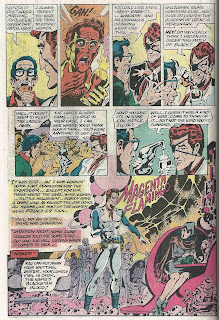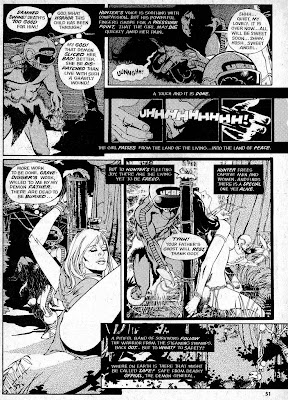Book Review: 'A Trace of Memory' by Keith Laumer
‘A Trace of Memory’ was published by the Paperback Library in September 1972. The novel is an expansion of a story first serialized in Amazing magazine, over the Summer of 1962.
The provider of the distinctive cover art, which looks like a cross between Boris Artzybasheff and Salvadore Dali, is not identified.
The hero of the story is a man named Legion, and as the novel opens, Legion is down on his luck. In fact, he is contemplating breaking and entering a cigar store for the meager cash stored in its strongbox.
Formerly an Army Intelligence operative, deck hand, casino worker, and lifeguard, Legion now hasn’t a penny to his name, just the clothes on his back.
On the spur of the moment, Legion responds to an advertisement seeking a soldier of fortune. Foster, the man who placed the advertisement, is something of an enigma. While wealthy and well-educated, Foster suffers from amnesia, and he is convinced that alien entities – floating spheres of yellow fire – are out to take his life.
Dismissing Foster as a mental case, Legion is on the verge of returning to a life of vagrancy, when Foster’s house comes under attack by mysterious persons and/or forces unknown.
The two men flee to Miami, where they ponder the cryptic entries written in a diary in Foster’s possession, a diary that may hold the key to his identity.
Legion’s interpretation of the diary contents leads the men to England, to Salisbury plain, and to the ruins of Stonehenge. There they stumble upon a secret buried in the earth….and a rendezvous with a spaceship dispatched from the other side of the galaxy.
That’s just the start of a journey that will take Legion to a distant planet, and a battle of wills with a race of alien aristocrats who hold the key to Foster’s past, and his future.
‘A Trace of Memory’ is a standard-issue sf novel from author Laumer, part and parcel of a commercially-oriented style of writing that he adhered to throughout his career.
Much like ‘A Plague of Demons’, the narrative is woven from an extended chase sequence that quickly and assuredly takes its protagonist from his oblivious, day-to-day existence on the streets of the city, to a shocked awareness of otherworldly agencies and individuals existing in secret on the planet Earth.
The narrative then moves into deep space, and an unfolding series of ‘cosmic’ revelations and confrontations.
Like most Laumer heroes, Legion handles both the marvels and terrors with a 60s soldier-of-fortune aplomb, never short on timely wisecracks, self-confidence, or brawling skills.
‘A Trace of Memory’ is a quick and easy read. And while I can’t call it outstanding sf literature, there is at least one sequence, involving a disturbing punishment visited upon Legion, that stands out as the highlight of the book.
It’s evidence that even when assembling the rather simplistic, conventional storylines that constituted the bulk of his professional output, Laumer could at times comes up with some memorable prose.
I can’t recommend to modern readers that they go out of their way to find ‘A Trace of Memory’, however, readers with a fondness for old-school sf adventures of the early 60s may want to keep an eye out for it.































































.jpg)























